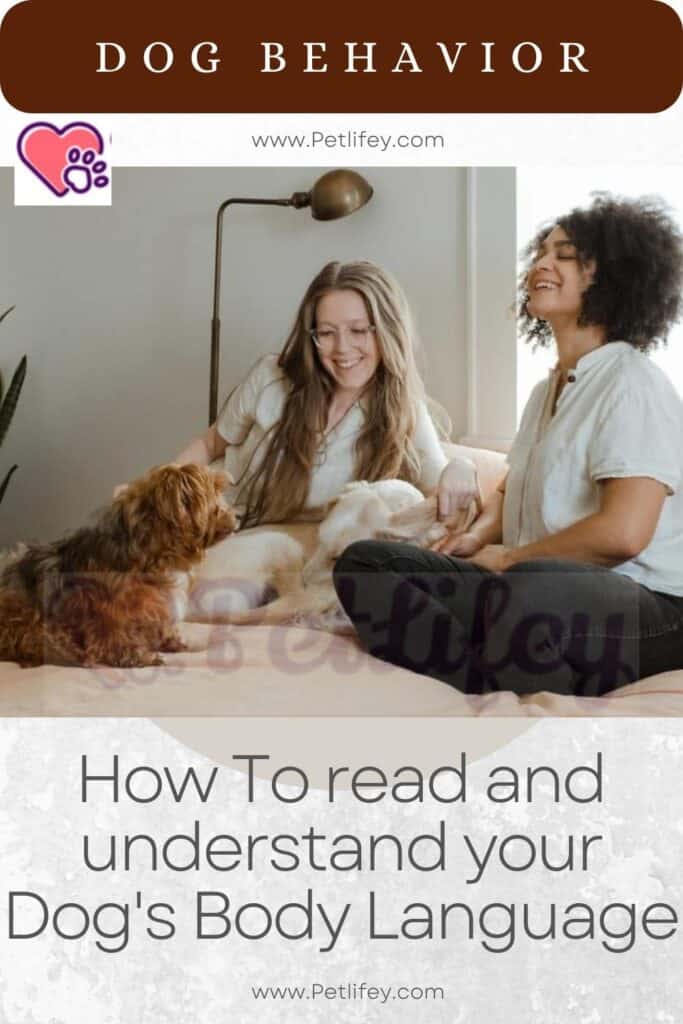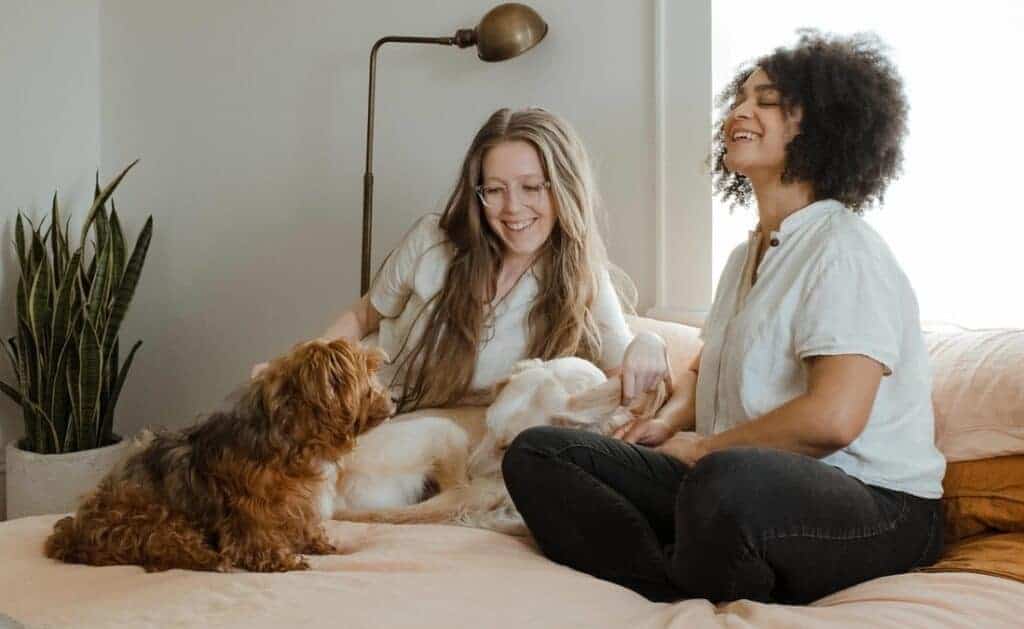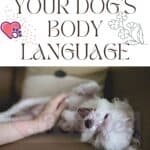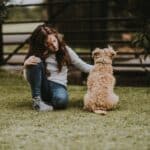
After so many years of living together, it can seem easy to interpret the body language of dogs. However, it can hide some secrets that owners may not know.
Surely, you know what your dog wants to tell you when it has a happy face or when he needs cuddles because it is sad. These are just a few aspects of dog body language. However, sometimes, nothing is as it seems.
In the following lines, we will tell you what are the main gestures and postures that dogs adopt in different situations. Knowing them will be very useful for understanding what your dog wants to communicate to you.
The body language of dogs: the parts of the body
We believe it is more useful to analyze each part of the animal’s body separately. We know that dogs use their whole bodies, however, each dog is unique. For example, a dog may not have a tail, so it is important to know where to look in order to understand what it wants to communicate to us.
Tail
The tail is the part of the dog’s body that humans observe the most to interpret the animal’s mood. Although tail swinging indicates joy, it is not easy to interpret the dog’s emotions through this parameter alone. The type of movement must also be considered. Let’s see some of them:
- Tail swing: sharp movements. They indicate excitement, but also joy or nervousness. The greater the excitement, the faster the dogs move their tails.
- Relaxed swing accompanied by movement of the hips. It means joy and a desire to play.
The other tail movements are:
- Stiffness and immobility of the tail. It means that the dog is tense in the face of a threat.
- Tail erect with or without movement. It means safety.
- Tail between the legs with the tip touching the abdomen. It means fear.
The ears
The ears, along with the rest of the face, can be very expressive when it comes to conveying moods.
- Ears backwards. They can be a sign of fear, insecurity, or even aggression (the dog gets defensive). However, they can be part of postures tending to pacification and conciliation.
- Ears forward. The dog is alert or showing interest and confidence. For one reason or another, dogs that position their ears in this way have an interest in what they are looking at.
Since the morphology of the ears varies from dog to dog, the best way to know what the direction of the dog’s ears is is to look at their base. This can be very useful if your dog has large floppy ears.
The mouth
The mouth is another of the most expressive elements of the face that allows us to understand the body language of dogs. Who hasn’t felt fear when the dog bares its teeth? The most common gestures that dogs make with their mouth are:
- Mouth open and relaxed. Sometimes, dogs can have their tongues sticking out too. Usually, it is one of the attitudes that show the dog is relaxed.
- Closed mouth. It can indicate that the dog is relaxed, but also that he is tense (the rest of the body must also be observed).
- The corners of the lips. They are very important to know what the dog’s tension level is. If he pulls them back abruptly, it means that the dog is afraid or lying down. If it shows its teeth, it means that it is taking an aggressive / defensive attitude.
The body language of dogs: the eyes
When observing the dog’s eyes, two fundamental elements must be taken into account: whether they are open and where the gaze is directed. The more the eyes are open, the greater the tension. If the sclera can be seen clearly , it means that the dog is afraid or terrified of something. Conversely, if he is relaxed, his eyes will be squinted.
Additionally, a steady gaze can indicate alertness, an aptitude for hunting, or the danger of a threat. On the other hand, if the dog looks away, it means that he may be feeling insecure or that he is afraid of something. This does not mean that he will not look at what scares him, but that he will do it through the corner of his eye and with quick glances.
Body posture
Sometimes, the dog’s general body posture can be misunderstood. It must be interpreted together with the other signals that underlie the dog’s body language. The various postures depend on the emotions that the animal feels.
In general, we can say that the more the dog has an upright posture, the more he feels confident and assumes the classic dominant position. A dog that squats or rolls on its stomach shows submission. In this way, it inhibits the aggressive behavior of other dogs.
Other signs are:
- Body tilted forward. Generally, this is a sign of interest, especially in social contexts.
- Body tilted back. In this case, the dog wants to avoid the interaction, situations or object in front of him.
- One of the front legs is slightly raised. It can indicate both attention and insecurity.
- Trunk resting on the ground, but with the posterior atria slightly raised. It is the classic playing posture.
- Hair-raising dog. As with tail movement, it can indicate arousal. However, we need to analyze the context and see if it is a sign of aggression.
The body language of dogs: the signs of calm

To fully understand the body language of dogs, we must also know those signals that allow us to understand if our dog is in a state of calm. We refer to a series of movements, gestures and attitudes that the animal adopts to avoid a conflict. Some are very easy to interpret like, for example, the submissive attitudes we told you about earlier. Others, however, are not so obvious.
Typically, a dog that is uncomfortable may look away, turn their head when sniffed at their face, quickly lick their mouth, yawn, assume a stiff posture, etc. If these signs are not taken into account, the dog may have an aggressive reaction, therefore, it is very important to know them.
As you have seen, there are many signals that our dog sends us. Did you know them all? A good understanding and a good coexistence will allow you to experience wonderful moments with your pet.






